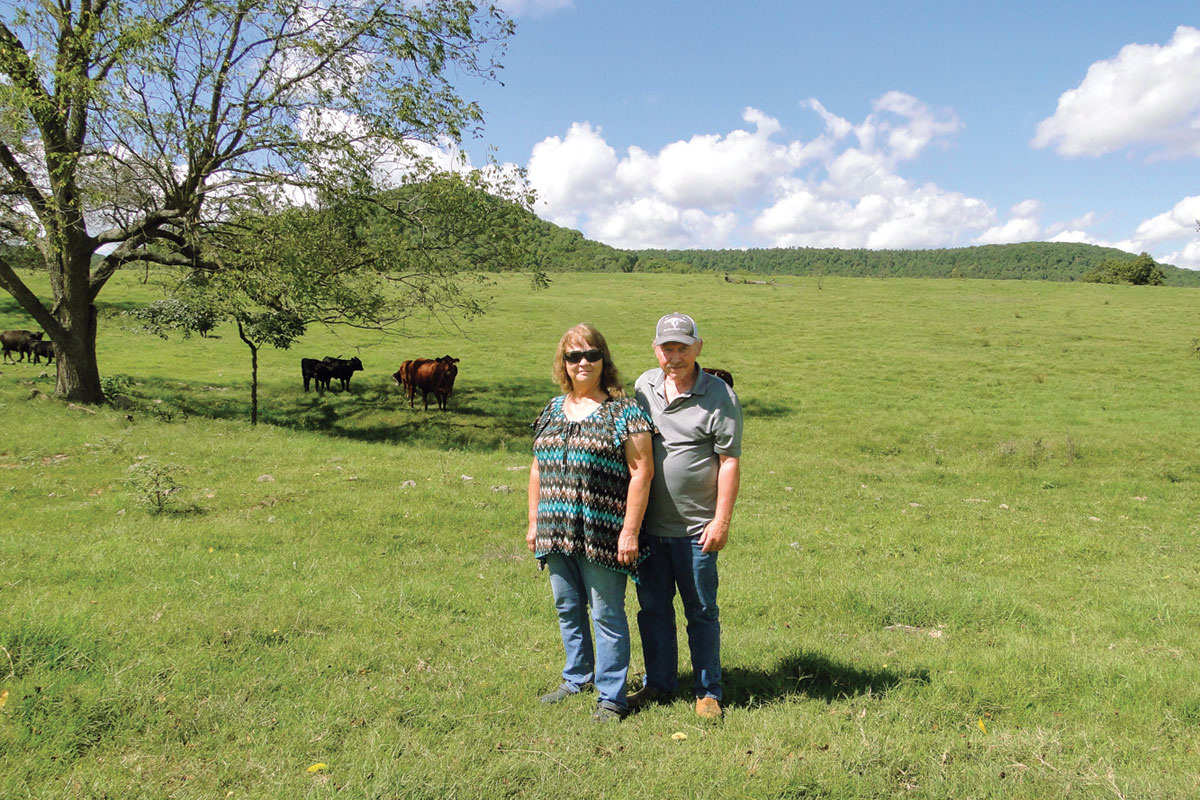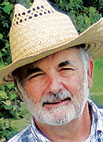 Rick and Terri Fields live in Fort Gibson, Okla., with their two daughters, Cierra, age 12 and Cheyenne, age 18, currently a junior in college. This family is one of those that go back to the beginning of Oklahoma. Both were part of the Cherokee removal, with Terri’s family settling in the 1830s and Rick’s in the 1840s. As a result, they have over 80 relatives living in the area.
Rick and Terri Fields live in Fort Gibson, Okla., with their two daughters, Cierra, age 12 and Cheyenne, age 18, currently a junior in college. This family is one of those that go back to the beginning of Oklahoma. Both were part of the Cherokee removal, with Terri’s family settling in the 1830s and Rick’s in the 1840s. As a result, they have over 80 relatives living in the area.
Cherokee heritage is part of everyday life as reflected in their log house featuring a wooden flute collection and a stone marble maker as predominant decorative features. In addition Rick has worked as the Cherokee Heritage Center Director and the Cherokee Nation Special Projects Manager though he is currently the Assistant Field Manager for the Bureau of Land Development. Though Terri has a degree in poultry genetics, Cheyenne has a hearing impediment, which led Terri to become a speech pathologist in the Tulsa school system.
The couple met when Rick, then site supervisor at the Fort Gibson historic site, agreed to allow Terri’s 4-H group to spend the night in the Fort in exchange for one day of cleanup work. The only one who showed up to work was Terri who felt very guilty and worked for 10 hours. Then Rick felt guilty because she worked so long and took her out to dinner following up by asking her out for a real date.
The Fields family is characterized best by their wide variety of interests. Though they have only 5 acres of ground around their home, they have cattle on nearby land in a consolidated operation with other family members. An interesting aspect of that consolidated operation is that Terri’s father and her grandfather, who passed just last year, produce and harvest hay for the entire family. They also had Quarter Horses from the renowned Leo line as workhorses. Until three years ago Duke, the last of the workhorses, plowed the 5 acre plot of corn annually. Though Duke died last year at the age of 35 years, he beat 3-year-olds when 28 at an Oklahoma showdeo barrel racing event for five and under. Because Terri’s father is slowing down but still providing hay for the family, the Fields have scaled back their cattle herd to 50 momma cows and use other Leo-line Quarter Horses to work them. The cattle are an Angus/Hereford cross that the Fields believe feed out the best. They use no cattle supplements, and while they do sell at sale barns, they have a substantial local buyer base as well.
The family also raises show pigs: Hampshire crosses. The show season runs from February to March, and the young hogs will soon be butchered. However, the Fields have to wait because the hogs had been fed show feed, which muscles them up. Now the hogs are on corn chop for six weeks to soften the fat and make them table ready as opposed to show ready.
Rabbits are the current featured animal and mainly Cierra’s project. Cierra’s work with rabbits started when she got a rescue animal rabbit. He placed last in a show but she had a great time and started learning about the American Rabbit Breeders Association and rabbits in general.
The Fields allow only two litters per year because they want to focus on show quality. They prefer the heritage breeds of Giant Chinchillas and Silver Foxes. Silver Foxes are now on the extinction list and keeping the breed going is a high priority. Nonetheless, the current litter is an experimental crossing of the Giant Chinchillas and Silver Foxes to see what kind of a meat animal emerges. Giant Chinchillas are so large that pregnant females need specially reinforced cages. The mommas are too heavy for standard ones. Most of the new rabbits are sold with show quality rabbits selling for $40, pet quality rabbits for $10 and meat rabbits according to current market prices.
Even though Rick was raised a city boy, he works with all of the animals except cows. He readily admits he doesn’t like them and is scared of them. Rabbits and pigs, on the other hand, are a different story. He enjoys the time and working with the animals but most of all the time spent with his girls.
Perhaps the best example of this family’s active, bright and enthusiastic nature is reflected in the classical names of some of their animals. They have a bull named Sir Wellington and two rabbits named Gladiator and King Leonidas.







